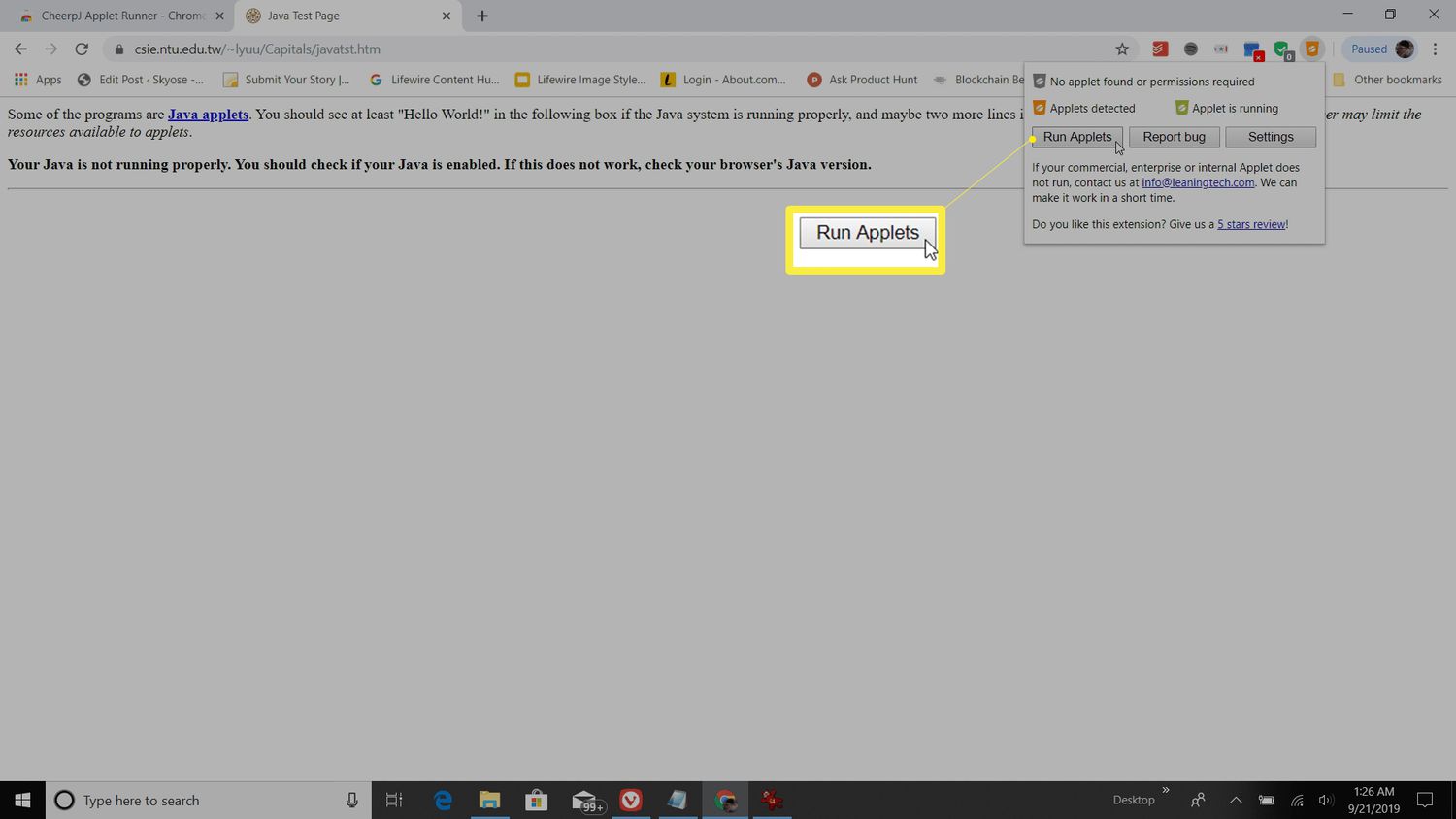Introduction
When it comes to web browsing, Google Chrome stands out as one of the most popular and versatile browsers available today. Its sleek interface, robust performance, and extensive range of extensions make it a top choice for users worldwide. However, despite its many advantages, Chrome has a notable limitation – it does not support Java. This absence of Java support has been a point of frustration for many users, particularly those who rely on Java-based applications and websites.
In this article, we will delve into the reasons behind Chrome's lack of support for Java, explore the history of Java support in the browser, and discuss viable alternatives for users who require Java functionality. By gaining a deeper understanding of this issue, users can make informed decisions about their browsing experience and explore alternative solutions that align with their needs.
The absence of Java support in Chrome has sparked curiosity and concern among users who rely on Java for various purposes, such as running enterprise applications, accessing online banking services, or utilizing educational resources. By shedding light on this topic, we aim to provide clarity and insight into the factors influencing Chrome's compatibility with Java, empowering users to navigate the digital landscape with confidence and adaptability.
As we embark on this exploration, it's important to recognize the dynamic nature of technology and the ever-evolving landscape of web browsers and extensions. By examining the nuances of Java support in Chrome, we can gain a deeper appreciation for the intricate interplay between software, compatibility, and user experience. Let's embark on this journey to uncover the intricacies of Java support in Chrome and discover alternative pathways for users seeking to harness the full potential of the web.
History of Java support in Chrome
In the realm of web browsing, the evolution of Java support within Google Chrome has been a compelling narrative shaped by technological advancements and shifting industry standards. The journey of Java in Chrome traces back to the early days of the browser, where Java applets were once a prevalent feature in web development. These applets, which allowed for interactive and dynamic content within web pages, leveraged Java technology to deliver rich user experiences.
During its formative years, Chrome initially embraced Java applets, aligning with the prevailing trends in web development. However, as the digital landscape evolved and security concerns emerged, the browser underwent a significant transformation in its approach to plugin support. This shift was underscored by the decision to phase out NPAPI (Netscape Plugin Application Programming Interface) support, which encompassed various plugins, including Java.
The transition away from NPAPI plugins, including Java applets, marked a pivotal juncture in Chrome's history of Java support. This strategic move was driven by a multifaceted rationale, encompassing security, performance, and the evolving nature of web technologies. As a result, Chrome gradually distanced itself from supporting Java applets, signaling a departure from the traditional paradigm of web content delivery.
The decision to discontinue support for Java applets within Chrome reflected a broader industry trend, as other major browsers also adjusted their plugin policies in response to security vulnerabilities and the emergence of alternative web technologies. This shift prompted developers and website operators to reevaluate their reliance on Java applets and explore alternative approaches to achieving similar functionality.
Amidst these developments, the landscape of web development witnessed a surge in HTML5, JavaScript, and other modern web technologies that offered compelling alternatives to Java applets. These advancements not only addressed the limitations of Java applets but also aligned with the industry's emphasis on performance, security, and cross-platform compatibility.
As Chrome continued to evolve, its focus on supporting modern web standards and enhancing user security remained steadfast. This emphasis, coupled with the diminishing relevance of Java applets in contemporary web development, solidified Chrome's trajectory away from Java support. Consequently, the browser's evolution reflected a strategic alignment with the prevailing trends and imperatives shaping the digital ecosystem.
The historical trajectory of Java support in Chrome serves as a testament to the dynamic nature of web technologies and the imperative of adapting to evolving industry standards. By contextualizing the evolution of Java support within Chrome, users can gain valuable insights into the interplay of technological innovation, security considerations, and the ever-changing landscape of web browsing.
This historical backdrop sets the stage for a deeper exploration of the reasons behind Chrome's decision not to support Java, providing a comprehensive understanding of the factors influencing the browser's compatibility with this widely-used technology.
Reasons for Chrome not supporting Java
The absence of Java support in Google Chrome can be attributed to several key factors that have shaped the browser's development and approach to web technologies. Understanding these reasons provides valuable insights into the intricacies of Chrome's compatibility decisions and the broader landscape of web browsing.
-
Security Concerns: One of the primary reasons for Chrome's lack of support for Java stems from security considerations. Java applets, which were once prevalent in web development, became associated with significant security vulnerabilities. These vulnerabilities posed risks such as malware infections, system exploits, and unauthorized access to user data. As a result, Chrome, along with other major browsers, made a strategic shift away from supporting NPAPI plugins, including Java applets, to mitigate these security risks and safeguard user experiences.
-
Performance Optimization: Chrome's emphasis on performance optimization and streamlined user experiences played a pivotal role in its decision not to support Java. Java applets, known for their resource-intensive nature and potential impact on browser performance, no longer aligned with Chrome's commitment to delivering fast, efficient browsing experiences. By prioritizing the adoption of modern web technologies that offer enhanced performance and efficiency, Chrome positioned itself at the forefront of web browsing while distancing itself from legacy plugins like Java applets.
-
Evolving Web Standards: The evolving landscape of web standards and technologies also influenced Chrome's stance on Java support. As the industry gravitated towards HTML5, JavaScript, and other modern web technologies, the relevance of Java applets diminished. These emerging standards not only addressed the limitations of Java applets but also offered versatile, cross-platform solutions that aligned with the evolving needs of web developers and users. Chrome's alignment with these modern web standards further underscored the diminishing relevance of Java applets in the contemporary web ecosystem.
-
User Experience and Compatibility: Chrome's commitment to delivering a seamless and secure browsing experience for users factored into its decision not to support Java. By prioritizing compatibility with modern web standards and minimizing reliance on legacy plugins, Chrome sought to enhance user security, streamline browser performance, and ensure cross-platform compatibility. This strategic focus on user experience and compatibility positioned Chrome as a forward-looking browser that prioritizes the adoption of innovative web technologies while mitigating potential security risks associated with legacy plugins like Java.
By considering these reasons, users can gain a comprehensive understanding of the multifaceted factors that have influenced Chrome's compatibility decisions regarding Java support. This insight empowers users to navigate the digital landscape with awareness of the dynamic interplay between browser development, security imperatives, and the evolution of web technologies.
Alternatives to using Java in Chrome
In the absence of native Java support in Google Chrome, users seeking to access Java-based content and applications can explore alternative pathways to achieve similar functionality. These alternatives not only address the limitations posed by the lack of Java support but also align with the evolving landscape of web technologies and browser compatibility. Here are several viable alternatives for users navigating the realm of Java-dependent content within Chrome:
-
Java Web Start: Java Web Start presents a compelling alternative for users seeking to launch Java applications within Chrome. This technology enables the deployment of standalone Java applications via web browsers, allowing users to launch and run Java-based programs seamlessly. By leveraging Java Web Start, users can circumvent the absence of native Java support in Chrome and access Java applications with ease.
-
Dedicated Java-Compatible Browsers: Users reliant on Java for specific applications or services can consider utilizing dedicated browsers that offer robust Java support. Browsers such as Internet Explorer and Firefox continue to provide support for Java applets, offering a viable alternative for users encountering Java-dependent content. By utilizing these browsers for Java-specific tasks, users can maintain access to Java functionality while leveraging Chrome for other browsing needs.
-
Java Emulation and Virtual Machines: Emulation and virtualization technologies present innovative solutions for running Java-based content within Chrome. Users can explore the use of virtual machines or emulation software to create environments conducive to executing Java applications. By running virtualized instances of Java-compatible environments, users can bridge the gap created by Chrome's lack of native Java support and access Java-dependent content seamlessly.
-
Migration to Modern Web Technologies: In scenarios where Java applets are integral to specific web-based services, developers and website operators may consider migrating to modern web technologies. By transitioning away from Java applets and embracing HTML5, JavaScript, and other contemporary standards, web-based services can achieve cross-platform compatibility and enhanced security while aligning with Chrome's emphasis on modern web standards.
-
Utilizing Java-Enabled Extensions: Chrome users seeking to interact with Java-based content can explore the availability of extensions that facilitate Java functionality within the browser. While Chrome itself does not support Java, certain extensions may offer limited Java support, enabling users to engage with Java-dependent content within the confines of the browser.
By exploring these alternatives, users can navigate the absence of native Java support in Chrome while maintaining access to Java-based content and applications. These pathways not only address the limitations posed by Chrome's lack of Java support but also underscore the adaptability and versatility inherent in the digital landscape. As users embrace these alternatives, they can harness the full potential of web-based services and applications, transcending the constraints posed by the absence of native Java support in Chrome.
Conclusion
In conclusion, the absence of native Java support in Google Chrome reflects a strategic alignment with evolving web standards, user security imperatives, and performance optimization. The historical trajectory of Java support in Chrome, marked by the transition away from NPAPI plugins and the emergence of modern web technologies, underscores the dynamic nature of web browsing and the imperative of adapting to industry trends.
The reasons behind Chrome's decision not to support Java, including security concerns, performance optimization, evolving web standards, and a focus on user experience and compatibility, provide valuable insights into the multifaceted factors shaping browser compatibility decisions. By considering these reasons, users can gain a comprehensive understanding of the intricate interplay between browser development, security imperatives, and the evolution of web technologies.
Furthermore, the exploration of alternatives to using Java in Chrome highlights the adaptability and versatility inherent in the digital landscape. From leveraging Java Web Start and dedicated Java-compatible browsers to exploring emulation, virtualization, and migration to modern web technologies, users have viable pathways to access Java-based content and applications while navigating the absence of native Java support in Chrome.
As users navigate the digital ecosystem, the absence of native Java support in Chrome serves as a catalyst for exploring innovative solutions and embracing the evolution of web technologies. By leveraging alternative pathways and adapting to the changing landscape of web browsing, users can transcend the constraints posed by the absence of native Java support, harnessing the full potential of web-based services and applications.
In essence, the absence of Java support in Chrome underscores the dynamic nature of technology and the imperative of adaptability in the digital era. By gaining a deeper understanding of the factors influencing Chrome's compatibility decisions and exploring alternative solutions, users can navigate the absence of native Java support with awareness, adaptability, and a forward-looking approach to leveraging the full spectrum of web-based experiences.

























